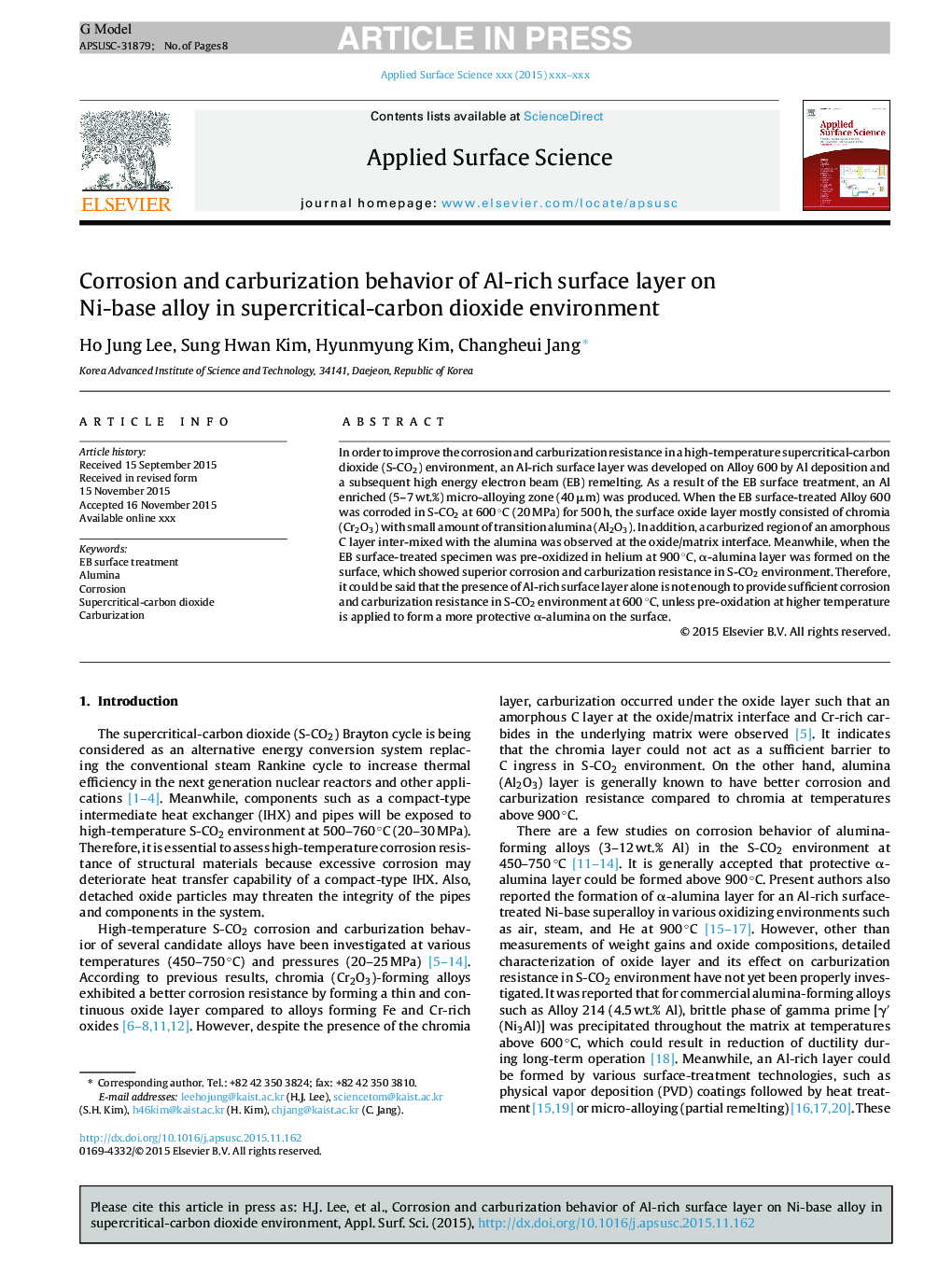| Article ID | Journal | Published Year | Pages | File Type |
|---|---|---|---|---|
| 5348570 | Applied Surface Science | 2016 | 8 Pages |
Abstract
In order to improve the corrosion and carburization resistance in a high-temperature supercritical-carbon dioxide (S-CO2) environment, an Al-rich surface layer was developed on Alloy 600 by Al deposition and a subsequent high energy electron beam (EB) remelting. As a result of the EB surface treatment, an Al enriched (5-7 wt.%) micro-alloying zone (40 μm) was produced. When the EB surface-treated Alloy 600 was corroded in S-CO2 at 600 °C (20 MPa) for 500 h, the surface oxide layer mostly consisted of chromia (Cr2O3) with small amount of transition alumina (Al2O3). In addition, a carburized region of an amorphous C layer inter-mixed with the alumina was observed at the oxide/matrix interface. Meanwhile, when the EB surface-treated specimen was pre-oxidized in helium at 900 °C, α-alumina layer was formed on the surface, which showed superior corrosion and carburization resistance in S-CO2 environment. Therefore, it could be said that the presence of Al-rich surface layer alone is not enough to provide sufficient corrosion and carburization resistance in S-CO2 environment at 600 °C, unless pre-oxidation at higher temperature is applied to form a more protective α-alumina on the surface.
Keywords
Related Topics
Physical Sciences and Engineering
Chemistry
Physical and Theoretical Chemistry
Authors
Ho Jung Lee, Sung Hwan Kim, Hyunmyung Kim, Changheui Jang,
